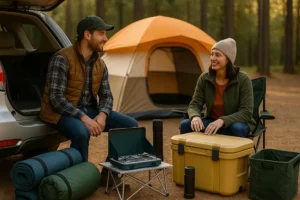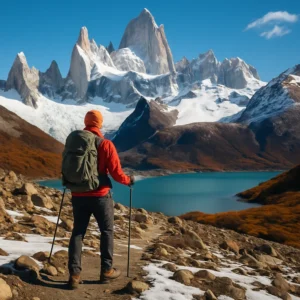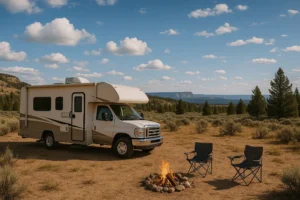When you set out on a long hike, one of the first questions that comes to mind is simple: where will you sleep? On the Appalachian Trail, the answer often lies in the wooden structures dotting the path from Georgia to Maine, Appalachian Trail shelters. These rustic outposts are more than just places to crash. They are history, safety nets, and community hubs rolled into one.
Spend a night in one and you’ll never forget it. Sometimes it’s 40 people crammed shoulder to shoulder. Other times it’s a quiet escape in the rain, listening to the wind push through the trees. The experience changes, but the importance stays the same.
A Brief History on the Trail
The shelter system on the Appalachian Trail has deep roots. Some of these structures date back to the 1930s, when volunteers and early trail builders set them up for the first generation of thru-hikers. One of the oldest still standing was built in 1934. Think about that. Nearly a century of hikers have huddled inside its walls, escaping storms or simply catching their breath.
Shelters became part of the DNA of the AT. Early thru-hikers relied heavily on them and some starting as late as May and still depending on shelters as nightly checkpoints. Today, thousands of hikers pass through, and the shelters remain a central part of the journey.
What You’ll Find in an AT Shelter
Forget modern comfort. Most Appalachian Trail shelters are three-sided lean-tos made of wood or stone. No heaters. No electricity. Just a roof, a wooden platform, and a chance to rest.
Some have extras: a picnic table, a fire pit, or a nearby privy. In a few sections, especially in the White Mountains, shelters (often called huts) offer bunks and meals. Thru-hikers can sometimes stay for free by washing dishes or helping with chores, it’s a system known as work-for-stay.
Others are famous for their quirks. There’s one known for being the tiniest on the trail. Another is surrounded by wildflowers each spring. A few are perched at scenic points where the sunrise floods directly into the open side. They vary widely, but each plays the same role: refuge.
Why Shelters Matter
When the rain pours, when the bears roam, when exhaustion sets in, shelters are lifelines.
Food storage is a constant battle. Hikers often hang their bags, but bears are clever. At one shelter, several food sacks were ripped apart by a single determined animal. That’s why many shelters in high-bear areas now have bear cables or require hikers to carry canisters. It’s not just about comfort. It’s about survival.
Crowding is another reality. During peak season, shelters can be packed with thirty or forty people. Some hikers love the buzz of conversation. Others pitch tents nearby, craving a bit of solitude while staying close enough for safety.
And then there are the bugs. On warm nights, mosquitoes and black flies drive people into shelters, bug bivvies, or under tarps. No two nights are the same.
Notable Shelters and Regions Along the AT
- Blood Mountain Shelter, Georgia – Built in the 1930s, it’s historic but requires bear precautions. It sits at the highest point in Georgia on the trail.
- Neel Gap Area – A shelter near here serves as a crucial stop for resupply. Many hikers camp just outside the structure due to limited space.
- Great Smoky Mountains National Park – Shelters are mandatory in this section. The high-elevation spruce-fir forests can be magical, but cold rain and beetle-killed trees add challenges.
- Shenandoah National Park – Shelters here are called “huts.” Hikers must camp at designated spots, and bear sightings are common.
- The White Mountains, New Hampshire – Home to famous huts where thru-hikers can do work-for-stay. These rugged shelters are surrounded by rocky climbs, unpredictable weather, and some of the trail’s hardest miles.
- Maine’s Hundred Mile Wilderness – Shelters here feel more isolated, though logging roads and resupply services mean it’s no longer pure wilderness. Still, they’re essential stopping points in one of the most challenging stretches of the entire trail.
Life in a Shelter: Community and Compromise
Shelters aren’t just physical structures, they’re social spaces. You meet strangers who quickly become trail friends. Stories are swapped. Meals are shared. Some hikers even pick up trail names after late-night jokes around the fire.
But community comes with compromise. Hiking in groups means starting later than you’d prefer. Sleeping next to a snorer is almost inevitable. Still, these shared experiences create bonds that carry hikers for miles.
Sometimes the shelters themselves spark trail traditions. At one halfway-point shelter, hikers celebrate by attempting the “half-gallon challenge” downing a half-gallon of ice cream in one sitting. It’s a rite of passage, a mix of misery and laughter.
When to Stay, When to Skip
So should you always plan to sleep in a shelter? Not necessarily.
Stay in a shelter if:
- The weather looks rough (rain, storms, high winds).
- You’re in a bear-heavy section without proper storage options.
- You’re craving company after days of solitude.
Skip the shelter if:
- It’s overcrowded and you want rest.
- You’re traveling with a dog (not all shelters allow them).
- You prefer privacy and a quieter night under your own tarp or tent.
Many hikers strike a balance: camp when it makes sense, but lean on shelters when conditions demand it.
The Hard Truths of Shelter Life
Shelters aren’t glamorous. Mice scurry across the floorboards. Food scraps draw unwanted attention. Rain sometimes blows sideways into the open wall. And yes, mornings come fast when twenty other people are stirring at dawn.
But these challenges are part of the trail’s rhythm. They force adaptation. They remind you that comfort is relative, and resilience is learned one night at a time.
Practical Tips for Using AT Shelters
If you’re planning your own hike, here are actionable steps for making the most of shelters:
- Plan Flexibly – Don’t lock in daily mileage assuming you’ll get space in a shelter. They fill up fast. Always carry a tent or tarp backup.
- Store Food Smart – Use bear cables, canisters, or odor-proof bags. Never leave food unattended near shelters.
- Arrive Early – If you want a spot, aim to reach shelters before evening. The “bubble” of hikers moves fast, and space is competitive.
- Respect Others – Keep noise down, pack out all trash, and avoid sprawling your gear across the entire platform.
- Embrace the Community – Shelters are about people as much as protection. Use the chance to connect, trade advice, and share the journey.
Beyond the Shelter Walls
Shelters are milestones, not destinations. They remind hikers how far they’ve come and how far they still have to go. One sign in Virginia warns hikers not to stare too long at the mileage to Katahdin, it can crush morale. Another shelter near the northern states feels like a victory just for reaching it, even before the final climb.
Each stop has its stories: nights of laughter, mornings of exhaustion, food shared, bears warded off. They stitch together the larger narrative of the Appalachian Trail.
Final Thoughts
Appalachian Trail shelters aren’t glamorous, but they are unforgettable. They’re living pieces of trail history, places where strangers become friends, and safe havens when nature shows its teeth. They demand patience, flexibility, and sometimes compromise. But they also reward you with stories you’ll carry long after the hike is done.
If you ever find yourself stepping onto the Appalachian Trail, don’t overlook these rustic structures. They’re not just shelters. They’re part of what makes the journey real.
FAQs
Appalachian Trail shelters are simple, three-sided wooden or stone structures spaced along the trail from Georgia to Maine. They provide hikers with a roof, a raised floor, and a dry place to rest.
Some shelters date back nearly a century. One of the oldest, built in 1934, is still standing and remains a popular overnight stop for hikers.
No, most shelters are very basic. At best, you’ll find a wooden platform, fire pits, or a nearby privy, though certain huts in the White Mountains offer bunks and meals through a work-for-stay system.
Shelters help, but food safety is the bigger concern. Bears and other animals often raid food bags, so many shelters have bear cables or require the use of bear canisters.
Not always. During peak hiking season, shelters can be overcrowded with 30–40 people, which is why carrying a tent or tarp as backup is essential.
Each has its quirks. Some are famous for flowers nearby, others are known as the tiniest on the trail, and a few are historic or set at scenic overlooks.
It’s best not to rely on them exclusively. Weather, space, or personal preference may push you to camp nearby instead, so flexibility is key.











